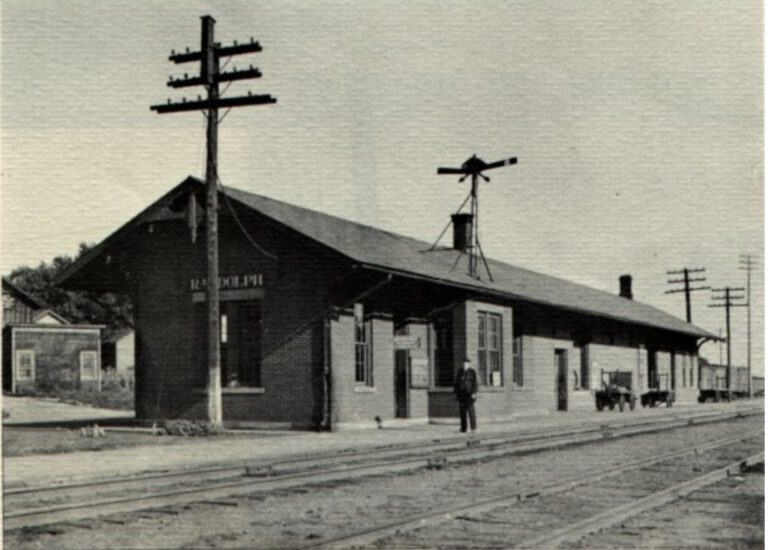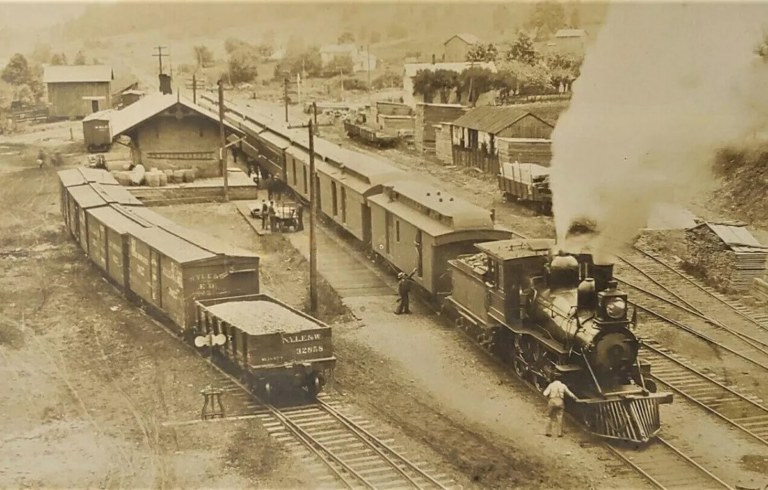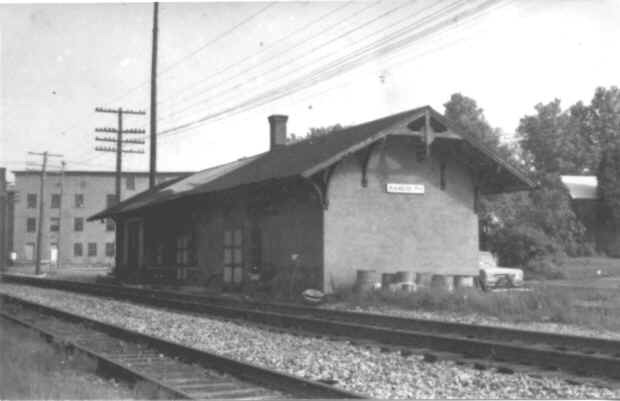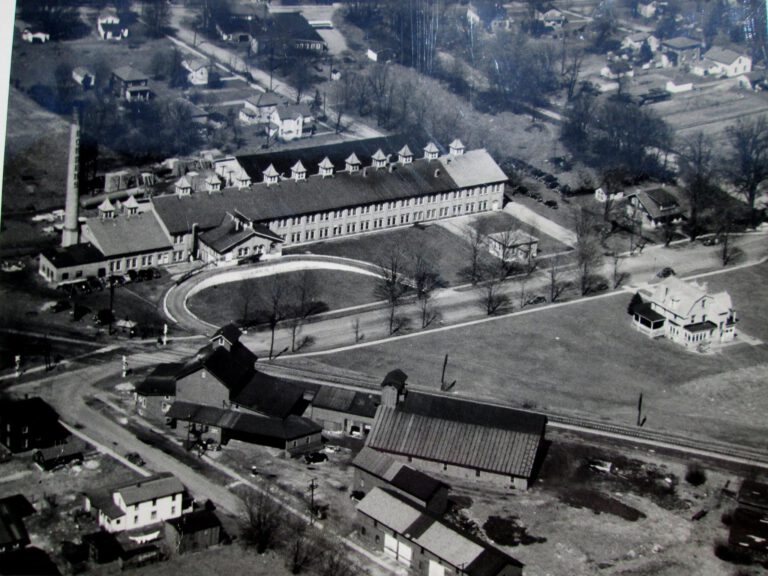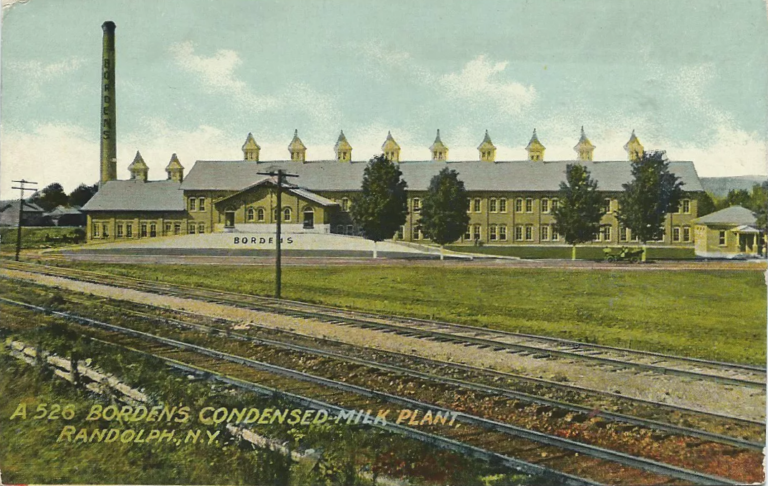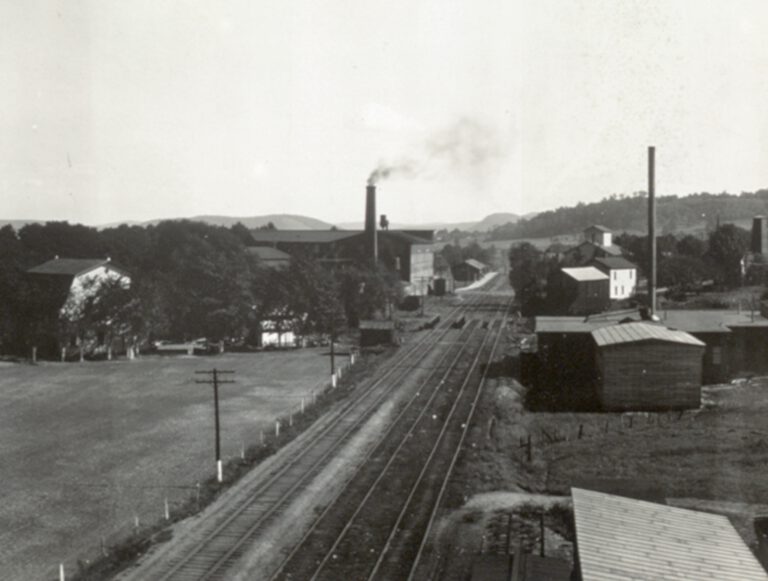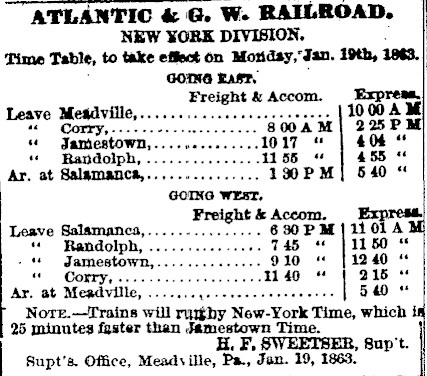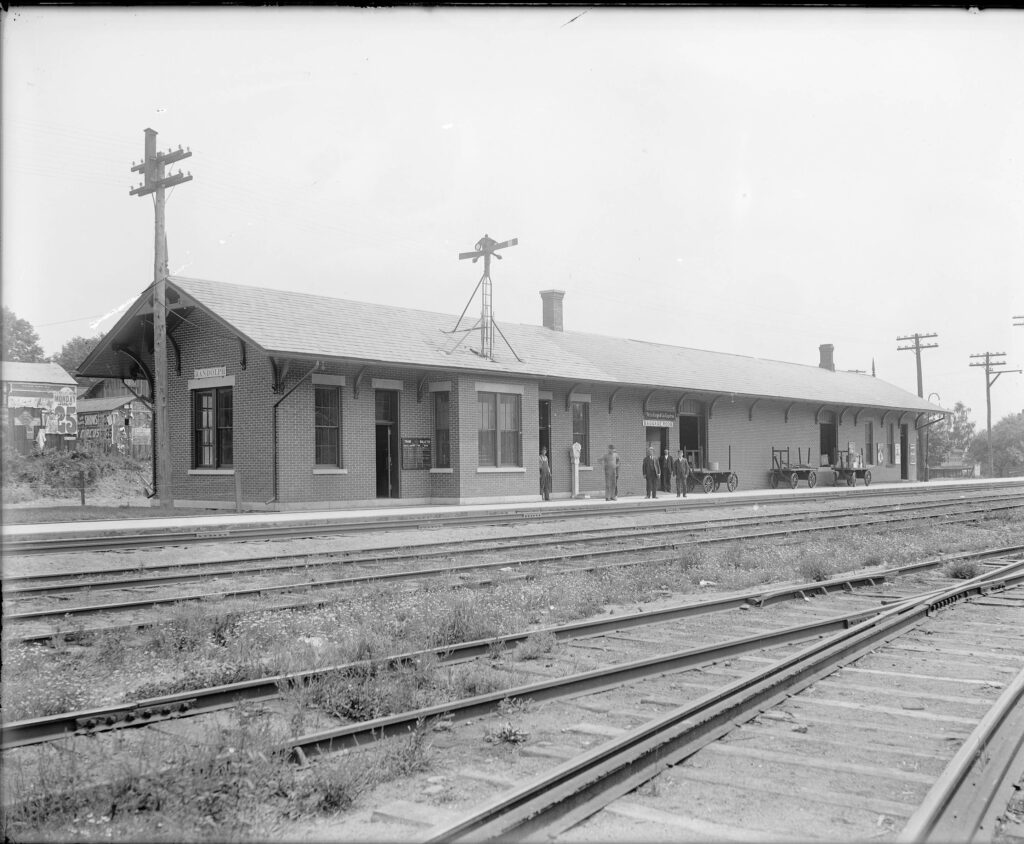
Randolph is a village on the western side of Cattaraugus county and was an important stop on the Erie Railroad main line between Jamestown and Salamanca.
History
Randolph was on the route of the original New York and Erie Railroad in the surveys of 1834 and 1836, but in 1849 Silas Seymour was ordered by the company to re-survey the route and recommended a new route that went from Salamanca to Dunkirk via Little Valley. The people of Chautauqua County protested mightily and the company appointed McRae Swift to re-examine the route yet again. He endorsed Seymour’s route and Randolph was left without a railroad.
Being bypassed by the New York and Erie spurred the people of Jamestown to action and on June 30, 1851 a group of Jamestown residents petitioned the New York State legislature for a charter for the Erie and New York City Railroad. The road was to be built from West Salamanca, through Randolph and Jamestown, to the Pennsylvania state line. Work began on the line in Randolph on May 19, 1853, but was abandoned on January 5, 1855 for lack of funds.
The Erie and New York City Railroad was never completed and was purchased in 1859 by the Atlantic and Great Western Railroad Company of New York. Construction began in May 1860 and by September of that year the line was complete to Jamestown.
In 1864/65 the A&GW began grading for the Buffalo Extension of the Atlantic and Great Western Railroad, an extension north from Randolph to Buffalo through Napoli, New Albion, and Otto. This was planned as a route into Buffalo independent of the Erie connection at Salamanca. During the winter and spring of 1864-65 considerable work was done in grading and preparing for extensive work. The work was soon abandoned.
The 1866 book “Over the Atlantic and Great Western Railway” describes Randolph thus:
“Westward from Salamanca, and between it and Meadville, there are several stations, but the most important are Randolph, Jamestown (New York), and Corry. The first of these, Randolph, is the proposed point of extension to Buffalo, the Great Lake City, from which New York, at second hand, chiefly receives its supply of grains. As yet Randolph is a small town, the population probably not exceeding 2000; but it is pleasantly situated, and, with the Buffalo extension, there is little doubt that it would speedily become one of the most important towns on the Atlantic and Great Western Railway east of Cincinnati. It would become to Buffalo what Chalk Farm is to Euston — the coal, lumber, and general merchandise depot, at which transfers would be made for Buffalo; for New York by way of Buffalo and the New York Central Railway; and for New York, by way of Salamanca and the Erie Railway. Necessarily, round such a place a numerous population must soon gather; and, of course, much the same reason would exist for local manufacturing industry as at Salamanca and elsewhere.”
Alas, the Buffalo Extension was never built and Randolph remained a small village, smaller today than 130 years ago. It is interesting for me (who grew up in Randolph) to imagine how different it might have been if the Buffalo extension would have been built.
The station shown here is at least the second station in Randolph. An 1870 inventory of the bankrupt Atlantic and Great Western (A&GW) Railway described the station at the time as “70×18, frame building, very poor, rough boards for siding, and shingle roof.”
Randolph was located in a single-track section between RH Tower at Milepost 12.7 (from Salamanca) to Waterboro at milepost 23.2. There was talk of relocating the track out of the village and expanding it to double track to handle the traffic demands of World War I, but that plan was never implemented and the route remained single-tracked.
Clippings
Station Photographs
Other Photographs
Maps
Timetables
Other Buildings
There were a number of railroad customers in Randolph, including a furniture factory, the Borden’s plant, and coal and lumber dealers. There were also other railroad-related buildings in the town. The 1870 A&GW inventory listed a “Water tank, good condition, gravity supply”, a “Wood-shed, 24×64, good frame, shingle roof” (early locomotives burned wood for fuel), and “Two hand-car houses, 10×12, frame, painted and good.” It also showed 25 tons of engine, anthracite, and blacksmith coal.
The inventory listed a “Rail shop, 120×40, good frame, rough board siding, shingle roof, unpainted.” The rail shop was four times larger than the depot and contained a portable engine (to power tools), a drill press, a lathe, four rail furnaces, numerous anvils, and a large supply of tools. The inventory showed over 150,000 pounds of rail and 16,000 pounds of iron.
Learn More
- Adams, William (editor). 1893. Historical Gazetteer and Biographical Memorial of Cattaraugus County, N.Y. Syracuse, NY: Lyman, Horton & Co., Limited.
- Atlantic and Great Western Railway Company. 1964. First Annual Report of the Atlantic and Great Western Railway – Year Ending December 31, 1863. Buffalo, NY: Wheeler, Mathews & Warren.
- Barry, Patrick. 1866. Over the Atlantic and Great Western Railway. London: Sampson Low, Son, and Marston.
- Erie Railroad Company. 1930. Erie Railroad Magazine, February 1930, p. 13.
- Everts, L. H. 1879. History of Cattaraugus Co., New York with Illustrations and Biographical Sketches of Some of its Prominent Men and Pioneers. Philadelphia, PA: J. B. Lippincott & Co.
